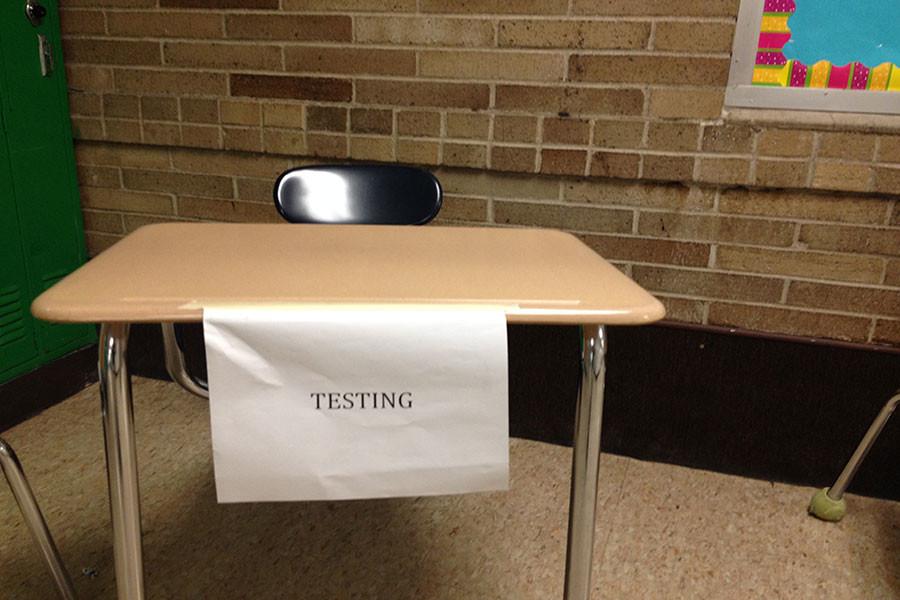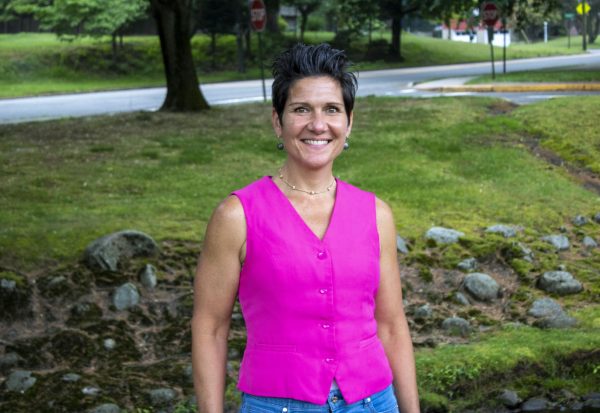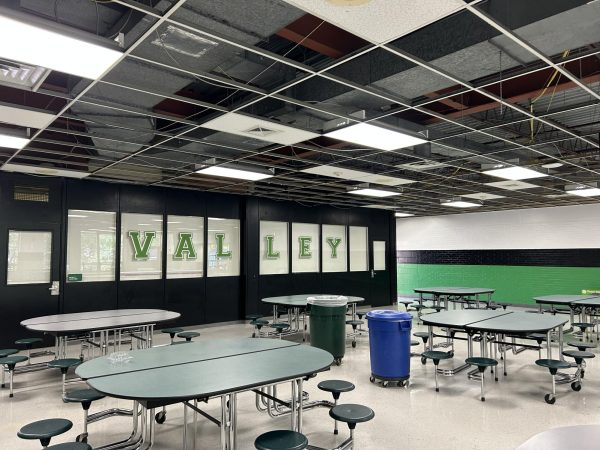Roughly half of eligible test takers refuse to take PARCC
The second round of PARCC testing took place Tuesday and Wednesday, and, according to principal Tom DeMaio, somewhere around 50 percent of students refused to take the test.
It was reported in The Smoke Signal that 270 students, or about 20 percent of the school’s population, refused to take the test during the March administering of it. DeMaio said that number actually turned out to be about 325 students. This time around, the number rose to about 400, which comprises roughly half of eligible test takers.
There were no significant changes to how the PARCC was administered since March, other than students being required to hand over cell phones at the beginning of each session. This time around, students took the “end of year content” test rather than the “performance” test they took in March. Students who refused were still kept in the auditorium, though there was a slight increase in students arriving to school after the PARCC sessions were over.
There is a question of whether or not the term “refusal” will be taken away with the overwhelming number of parents and students making that decision.
Refusal, said DeMaio, is not an option given to the parents, but a “statement made by the parents.”
“It’s very easy for people to make that statement because we’re all very well aware there are no individual consequence for refusing to take the test, “ DeMaio said. “The question would be: If and when PARCC counts towards you graduating with a diploma from the state of New Jersey, are 400 people going to refuse to take the test?”
The data from the tests are supposed to help the district adjust the curriculum and gauge student progress.
“I don’t know yet (what changes we have to make the the curriculum).” said DeMaio. “It hurts the district because we aren’t going to be able to make sound judgement by using [the data] because it’s skewed.”
According to DeMaio, while there were technical glitches, there were many less than last time and “everyone was more prepared to handle them this time around.”
Noah Adoff, a junior, was one of few students who experienced technical difficulties.
“There was one point where I abnormally logged out and I had to wait 20 minutes for them to eventually solve the problem,” Adoff said. He finished the first section of testing with 45 minutes left on the clock.
Jenny Peshansky, a junior, felt there was too much time given for the exams.
“It ended extremely quickly, and the rest of the time was us sitting there bored,” Peshansky said, “Today during a break from the AP test I saw something that encapsulates perfectly how the PARCC feels – I was walking past a classroom where kids were taking the PARCC, and it was half an hour in and they were all done… and one kid was just violently banging his head against a desk.”
The first full class that the PARCC will count towards graduation for is the Class of 2019. It is unclear how the PARCC will affect the district at this point.
With the increase in refusals all around the state, David Hespe, New Jersey’s Commissioner of Education, has threatened to take funding and needed improvements from schools that have higher than a 5 percent refusal rate. There is no guarantee that they will follow through.
“All we can go by is what’s being said,” DeMaio said. “I’m taking the wait and see approach.”







